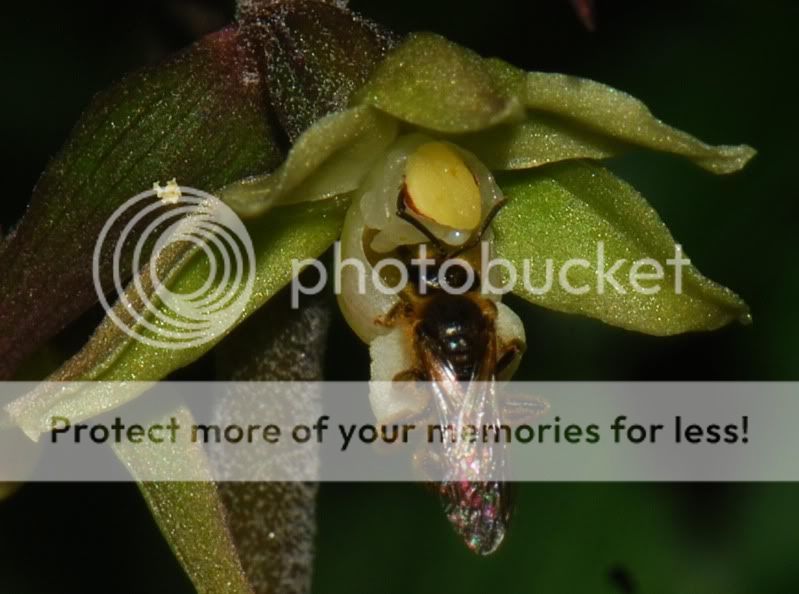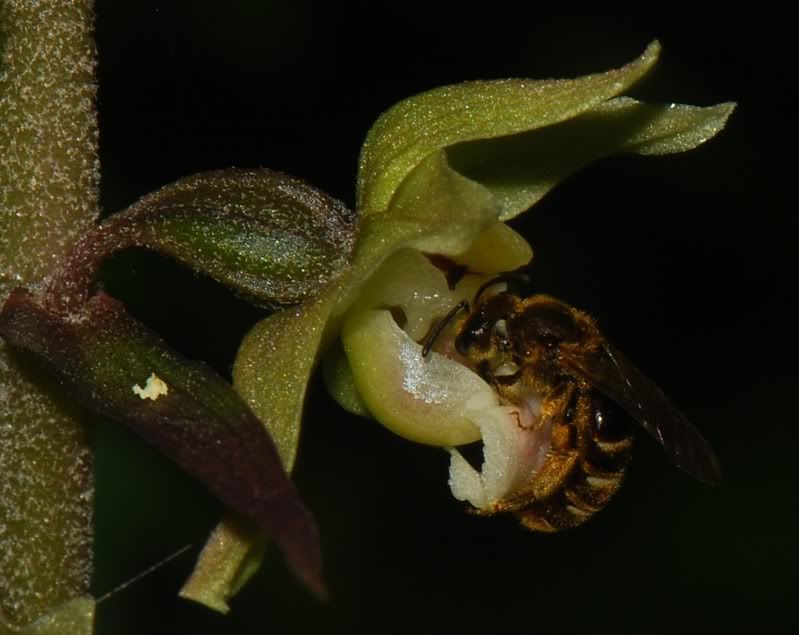around the world,about 30-35representatives of the genusepipactis are known to exist ,oftern insufficiently differentiated from eachother ;an overwhelming majority of them grow in the Temperate Zone of the Northern Hemisphere and there is only one species known to grow in Mexico. E. purpurata is among the species that are highly dependent on nutrition provided by fungal fibers .The surface of its foliage can therefore be reduced and the level of chlorophill in the tissues can be low. Some extreme instances have been discovered that contained no chlorophill whatsoever -such plants are completely purple and pink from top to bottom .
The plant's trailing ,inclined ,branched underground rhizome gives rise to several blue and purple stems reaching lengths of 2-4 in/5-10 cm. Like the rest of the plant ,the leaves are ''afflicted'' with a partial loss of chlorophill ,they are blue and purple colored and extended .The inflorescence is up to 10 in/25 cm long, dense, rich ,and consisting of 25-50 relatively large flowers .The lip features a bowl -shaped ,brown and purple hypochile that excreates a lot of necter . The end of the lip is purplish .E.purpurata has a passion for shady environments ,and therefore occures mainly in relatively dense forests of natural orgin .It grows more rarely in spruce monocultures .It blooms between July and September and come from Central and Western Europe.





















































